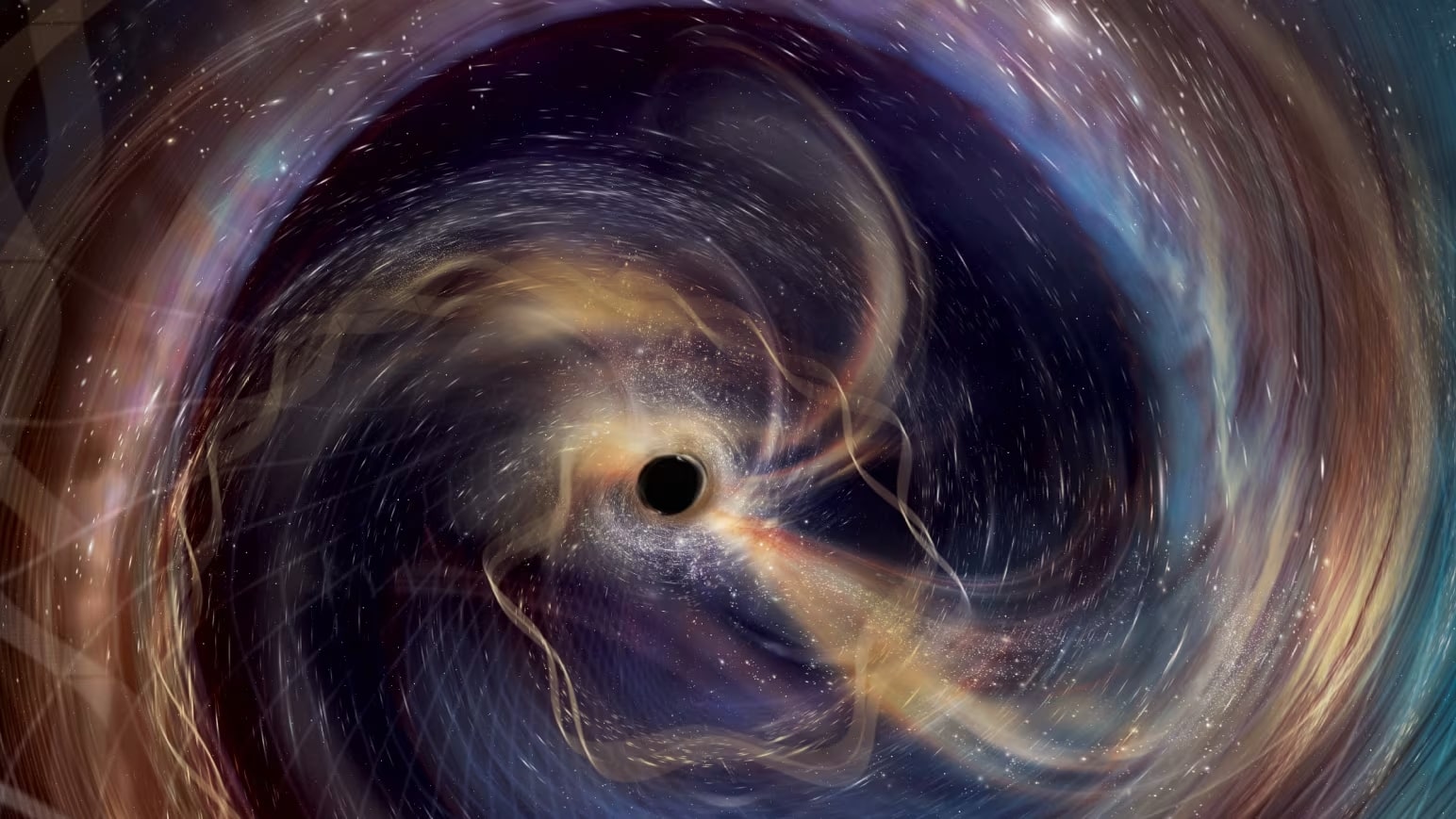
New evidence for Hawking's claim about the surface of a black hole
12-09-2025
The international network of scientists LVK, which includes three researchers from the National Centre for Nuclear Research, has confirmed Stephen Hawking's claim about the surface of a black hole. Ten years after the recorded detection of gravitational waves, thanks to modern technologies, the theory that the total surface area of black holes does not decrease has been confirmed.
On September 14, 2015, a faint but extraordinary signal reached Earth after traveling 1.3 billion years across the cosmos. It was not light, but a subtle ripple in the very fabric of space-time: gravitational waves, first predicted by Albert Einstein a century earlier. That day, the twin detectors of the Laser Interferometer Gravitational-Wave Observatory (LIGO) captured the first direct evidence of gravitational waves, a discovery announced to the world in February 2016.
This collaboration now detects about one black hole merger every three days. To date, the network has observed more than 300 black hole collisions, with many confirmed and others under analysis. During its ongoing fourth science run alone, LVK has identified about 230 merger candidates, more than double the total from its first three runs combined.
"It gives me great satisfaction that after years of work we can confirm one of Stephen Hawking's most important predictions. Gravitational waves have opened a new window on the universe for us, and now they also allow us to verify the fundamental laws of black hole physics. I am glad that together with the team from the National Center for Nuclear Research and the Polgraw-Virgo group, we were able to contribute to this groundbreaking discovery," said Prof. Andrzej Królak from the Department of Astrophysics at the National Center for Nuclear Research.
The dramatic improvement in detector sensitivity is highlighted by the recent discovery of GW250114 (recorded on January 14, 2025). Like the first detection, GW150914, this event involved two black holes roughly 30–40 times the mass of the Sun merging about 1.3 billion light-years away. But thanks to a decade of technological advances that reduced instrumental noise, the new signal is significantly clearer, allowing for more precise measurements.
In a recent article dated September 10, 2025, the LVK team reports that this event provided the strongest observational evidence yet for Stephen Hawking's black hole surface area theorem. First formulated in 1971, it states that the total surface area of black holes cannot decrease. During a collision, black holes lose energy in the form of gravitational waves, and at the same time, they can increase their spin, or internal angular momentum, which could reduce their surface area. However, the theorem predicts that despite these factors, the combined black hole will always have a larger surface area than the sum of the surface areas of the black holes before the collision. GW250114 confirms this prediction with unprecedented precision. Prof. Królak generalized this theorem to also include cosmological cases.
Prof. Królak, together with Dr. Orest Dorosh and Dr. Sreekanth Harikumar from the Astrophysics Department of the National Center for Nuclear Research, are members of the Polgraw-Vigro group, which made this discovery in collaboration with the LVK team.




